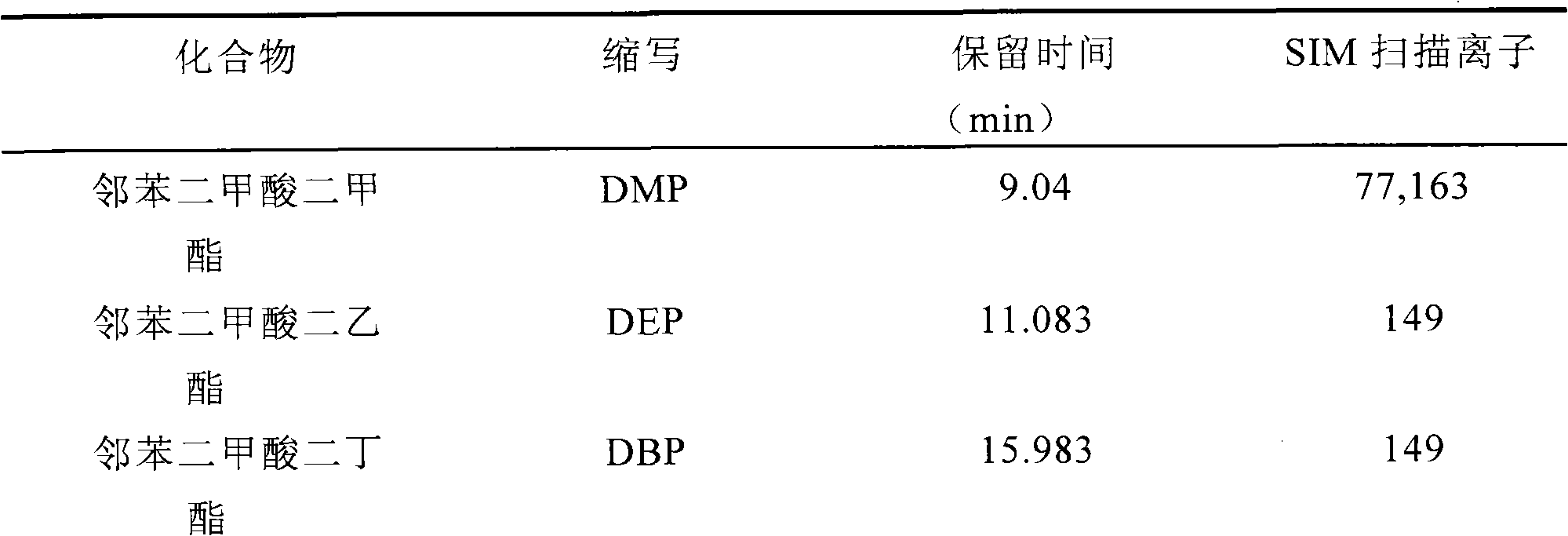Method for determining phthalate ester in soil
A medium phthalate and soil technology, applied in the field of trace pollutant analysis in the environment, can solve problems such as low resolution and overlapping retention times of isomer groups, achieve high sensitivity, reduce matrix interference, and reduce the possibility of Effect
- Summary
- Abstract
- Description
- Claims
- Application Information
AI Technical Summary
Problems solved by technology
Method used
Image
Examples
Embodiment
[0027] The invention uses dichloromethane as the extracting liquid, extracts by ultrasonic extraction, concentrates by nitrogen blowing, and finally analyzes and measures by gas chromatography tandem mass spectrometry (GC / MS), so as to accurately and quickly analyze the phthalate in soil.
[0028] 84 agricultural soils of 21 different land use types in Tianjin were selected as the analysis objects. The analysis methods and results are as follows:
[0029] Extraction process: Take a certain amount of naturally air-dried soil in an Erlenmeyer flask, add 15mL of dichloromethane according to the optimized conditions, ultrasonically extract for 5 minutes, collect the extract after filtering, and repeat the above steps twice;
[0030] Concentration process: blow off the dichloromethane solvent from the combined extract with nitrogen, blow to 5mL, transfer to the concentrator tube and continue to blow to below 2mL, add internal standard, and dichloromethane to volume;
PUM
 Login to View More
Login to View More Abstract
Description
Claims
Application Information
 Login to View More
Login to View More - R&D
- Intellectual Property
- Life Sciences
- Materials
- Tech Scout
- Unparalleled Data Quality
- Higher Quality Content
- 60% Fewer Hallucinations
Browse by: Latest US Patents, China's latest patents, Technical Efficacy Thesaurus, Application Domain, Technology Topic, Popular Technical Reports.
© 2025 PatSnap. All rights reserved.Legal|Privacy policy|Modern Slavery Act Transparency Statement|Sitemap|About US| Contact US: help@patsnap.com



